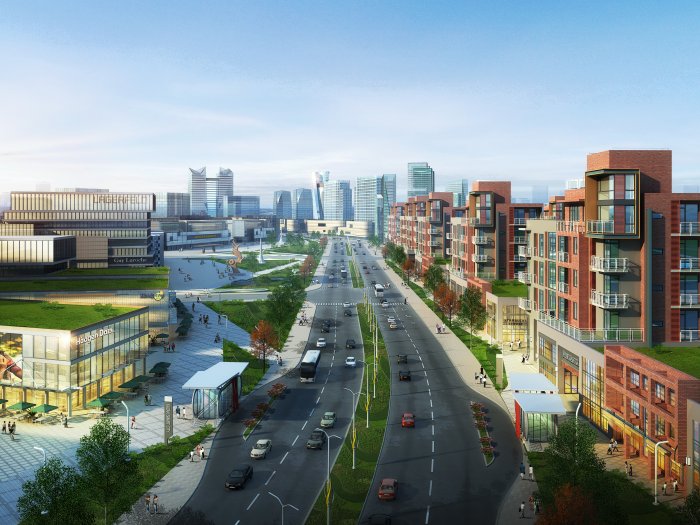NEWS
A few days ago several technical news publications reported that Sidewalk Labs, owned by Google’s parent company Alphabet, together with the Canadian city of Toronto has announced the creation of a smart city concept.
The planned green field project on 5 hectares of waterfront area will be completely covered by sensors and cameras. They will monitor pedestrian and vehicle traffic, including travel habits, energy consumption, noise level and air quality. In traffic priority will be given to pedestrians and cyclists, but they are also preparing for self-driving taxis and self-driving trucks. They will be able to model planned changes from the collected data and usage patterns, thus continuously tuning the neighborhood’s workings to the needs of those living there.
The definition of smart city in Hungary is already stipulated by a government decree (314/2012. (XI.8.)), which expects a city development methodology that “makes use of modern and innovative information technology to improve the natural and artificially built environment, the digital infrastructure, and the services and economic efficiency provided by the city in a sustainable way, with the increased involvement of the population.” Perhaps instead of calling the city smart, we should call its residents smart who will solve their daily problems in the physical and virtual infrastructure in a way that will respect the sustainability of their environment and each other. Since these problems are different from city to city, expectations cannot be uniform. I see the current situation similar to about ten years ago when mobile data transmission first appeared and network operators made it available nationwide with large investments, and then they started searching for that incredibly popular application (or as it’s called in English, the “killer app”) that their users will latch onto and with which they will fill out the bandwidth, thus getting a return on their investment. But ultimately, there was no such application, or rather it wasn’t one but many smaller solutions that responded to the diverse needs of the users. Finally, the rearrangement of user habits and the many applications built on top of it made their network reach the traffic levels they so wanted at the beginning. Back to smart cities, the similarity I see is that major infrastructure investment will be needed again (or is needed already) which will not be recouped in the short term. We also shouldn’t count on one or two solutions that will check the box to give a city the right to call itself “smart”. The diversity of the users will be created by the people living and working there, by the businesses operating there – they will make the city smart.
When assessing the solutions to be implemented, it will help greatly to have a vision for a city where the keyword is “livable”. Take transportation, for example. Probably few citizens dream about sitting in a traffic jam every day. That is more like a nightmare. The propagation of self-driving vehicles is linked to the (I think Utopian) idea that traffic jams will disappear. There is no doubt that the coordinated driving of vehicles can reduce trailing distance, or that remotely adjusting the moving speeds according to the traffic can improve the traffic dynamics in an area, thus increasing the throughput of a given road segment. But if too many vehicles get on a given road and on its crossroads, there will be congestion, and then traffic jam. It’s no mistake that in Toronto’s plan the pedestrians and cyclists feature in the first place, that the city project will be connected to the public transport network, and that cars are listed only at the very end of the priority list. As citizens of a smart city we should better get attuned to this vision of the future if we want to be part of a more livable environment.
It was also interesting to see what were some further reactions to the news about this Google-Toronto “marriage”, which has more of a technological interest. The perception is not always positive. Cities would gladly share the cost of the huge infrastructure investment mentioned before with a company that is willing to invest in it, but it does matter at what price they’re doing it. We cannot let the control of a district or an entire city handed over to a party that was not chosen by its citizens to be in this leading position. A technology company may understand many issues, but its experience was not gained by managing cities, and not every working mechanism can be transplanted from a profit-oriented company to city management. When making cooperation agreements, the elected leaders of the cities should always keep this in mind.
Balázs Bodnár, Managing Director of evopro systems engineering Ltd.

